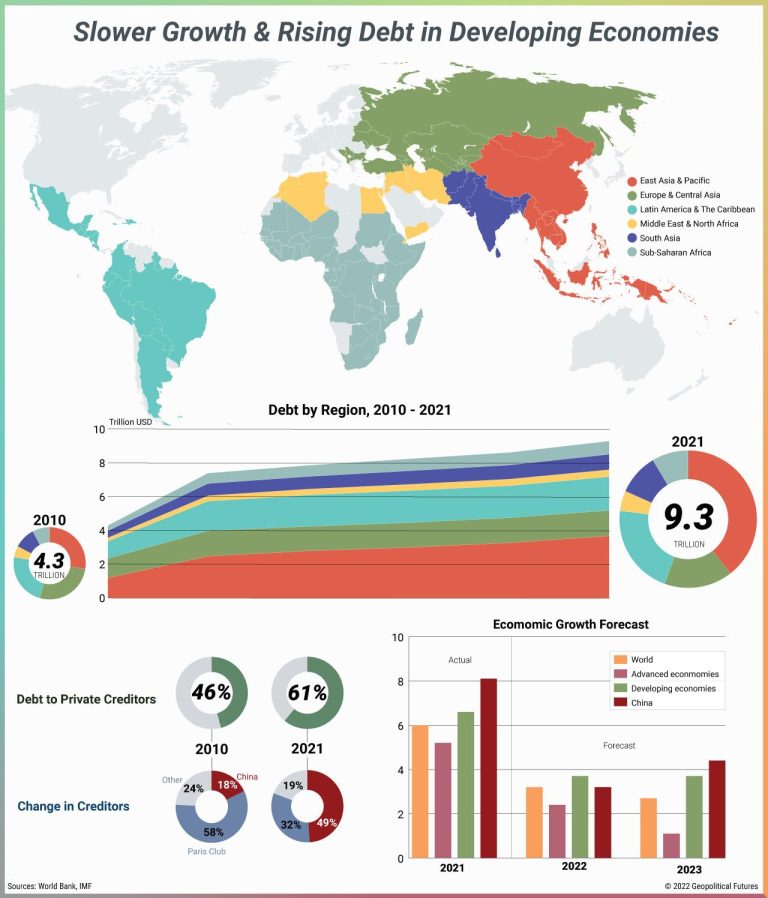Developing nations are confronting a deepening debt crisis as higher interest rates, a strong U.S. dollar and slowing growth push borrowing costs to new highs and strain public finances. Mounting repayments are crowding out essential spending on health, education and infrastructure, raising the risk of defaults and social unrest in some of the world’s most vulnerable economies.
The squeeze follows a pandemic-era surge in borrowing and a series of external shocks, from energy and food price spikes to climate-related disasters, that have weakened fiscal positions. Fragmented creditors and protracted restructuring talks are complicating relief efforts, leaving governments with few good options just as investment is needed to spur recovery and meet development goals.
Table of Contents
- Rising borrowing costs a stronger dollar and climate shocks strain budgets and push vulnerable economies toward default
- Opaque bilateral loans and private creditor holdouts slow restructurings as multilateral backstops prove inadequate
- Enforce debt transparency set time bound restructuring milestones adopt state contingent and climate resilient clauses and expand concessional finance to safeguard social services
- In Conclusion
Rising borrowing costs a stronger dollar and climate shocks strain budgets and push vulnerable economies toward default
With global financing conditions tight, many low- and middle-income countries face rising refinancing costs, a robust U.S. dollar that inflates hard-currency debt service, and mounting climate-related shocks that widen fiscal deficits and weaken growth; together, these forces are eroding reserves, closing market access, and pushing more governments toward IMF programs and complex restructurings as clustered bond maturities arrive mid‑decade and social pressures build over subsidy reforms and inflation.
- Higher coupons on rollovers swell interest bills and crowd out investment.
- Stronger dollar amplifies local‑currency costs of external debt and imports.
- Climate losses force emergency spending while tax bases shrink.
- Market access narrows as spreads widen and investor risk appetite fades.
- Maturity walls compress liquidity buffers and deplete FX reserves.
- Social risks intensify amid subsidy cuts and fragile safety nets.
Opaque bilateral loans and private creditor holdouts slow restructurings as multilateral backstops prove inadequate
Restructuring timelines are lengthening across vulnerable economies as undisclosed collateral in state-to-state deals and splintered private creditor groups impede burden-sharing, while limited emergency facilities from global lenders cover liquidity but not solvency, widening financing gaps, delaying program rollouts, and intensifying social strain through uncertainty, higher risk premia, and compressed public investment.
- Why it matters: Confidential covenants and escrow arrangements obstruct comparability of treatment and harden negotiating positions across creditor classes.
- Bottlenecks: Divergent legal venues, uneven collective action clauses, and incentives for holdouts tilt outcomes toward litigation over compromise.
- Insufficient buffers: SDR rechanneling and precautionary lines remain slow and modest relative to refinancing walls and climate shocks.
- Market fallout: Prolonged talks fuel downgrades, capital flight, and rising coupons, shutting frontier issuers out of primary markets.
- What could unlock progress: Mandatory disclosure of bilateral terms, time-bound standstills, state-contingent instruments, and clearer seniority for new money to safeguard program financing.
Enforce debt transparency set time bound restructuring milestones adopt state contingent and climate resilient clauses and expand concessional finance to safeguard social services
With payment pressures intensifying across low- and middle-income economies, officials and creditors are moving toward a concrete package: stricter disclosure of all sovereign obligations, dated restructuring timetables to curb uncertainty, shock-responsive contract clauses that suspend or recalibrate payments after disasters, and scaled-up concessional support to prevent cuts to essential services. Analysts note that comprehensive registers capturing collateralized loans and state-owned enterprise liabilities are critical to restore confidence, while binding milestones and automatic relief triggers aim to shorten negotiations and reduce arrears; meanwhile, ring‑fenced grant and low-cost financing is seen as the quickest way to keep hospitals, schools, and safety nets funded during fiscal stress.
- Transparency on public debt: publish complete liability registers (including collateral, maturities, and FX terms) with regular, audited updates.
- Time-bound workouts: introduce standstills, standardized term sheets, and 90-180 day decision windows aligned with program benchmarks.
- Shock-responsive clauses: adopt state-contingent features (e.g., GDP/revenue links) and climate disaster provisions enabling automatic deferrals after certified events.
- Concessional finance for services: expand grants and low-interest buffers with social spending floors, independent monitoring, and transparency on disbursements.
In Conclusion
As borrowing costs climb and currencies weaken, the room for policy maneuver is narrowing across much of the developing world. Without faster, more predictable relief and fresh concessional financing, governments face difficult trade-offs that risk reversing recent development gains and forcing more economies into disorderly restructurings.
The focus now shifts to upcoming IMF-World Bank meetings and G20 discussions, where officials are expected to press for quicker pathways under the Common Framework, clearer rules on comparability of treatment, and greater participation by private and non-Paris Club lenders. Markets and policymakers alike will be watching for concrete timelines, interim liquidity backstops, and new instruments to link debt relief with investment, including climate-related finance. The speed and scope of those decisions will help determine whether vulnerable countries can stabilize their finances-or slide deeper into crisis.


